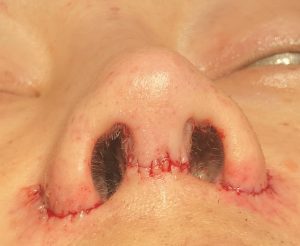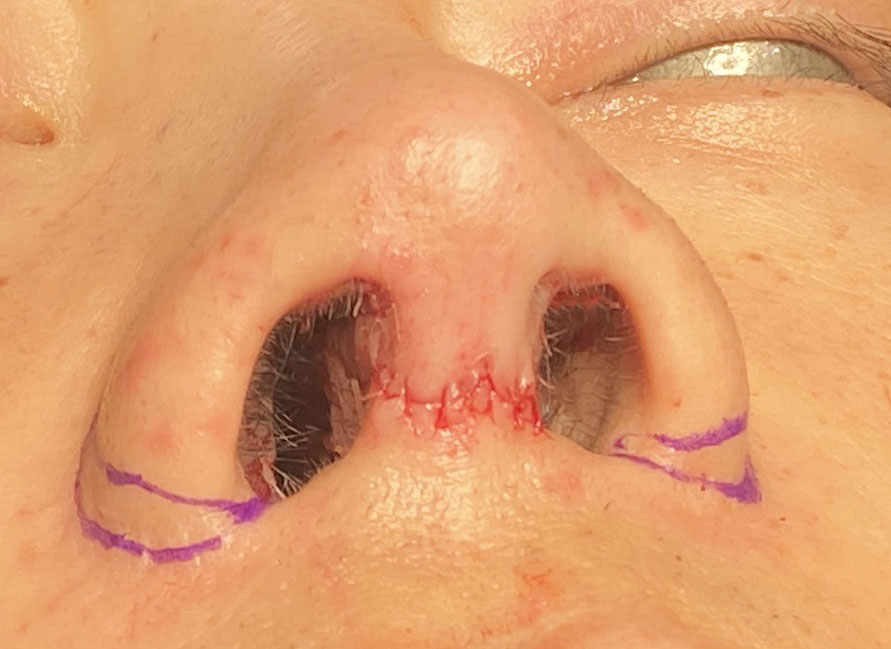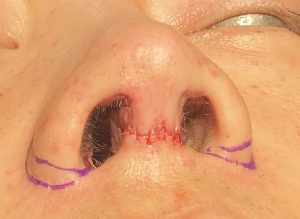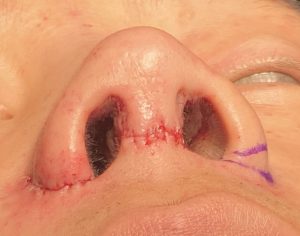Wide nostrils are a not uncommon feature of a nose that is often treated as the final step in rhinoplasty surgery. It can occur as a natural feature of a nose or one that is created by surgery from the overall nose narrowing effect. (induced nostril widening) The origin of the wide nostrils may affect the surgical technique to correct it.
In induced nostril widening a type 1 nostril reduction technique will usually suffice as the needed change is modest. Internal skin wedge resections of 2 to 4mms will pull in each nostril enough to be more harmonious with the new shape of the tip of the nose and create improved equilateral triangular shapes from the basal view. Such internal wedge resections leave minimal scarring at the junction of the inner nostril rim and the nasal sill.


While type 2 nostril narrowing can be done in nose that needs this type of nostril dimensional change, it tends to be more frequently done in Asian rhinoplasty where thicker skin and wider nose shapes are common.
Dr. Barry Eppley
World-Renowned Plastic Surgeon






